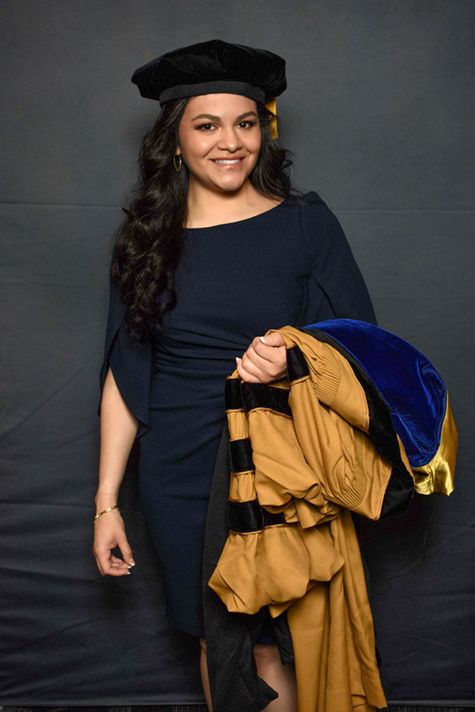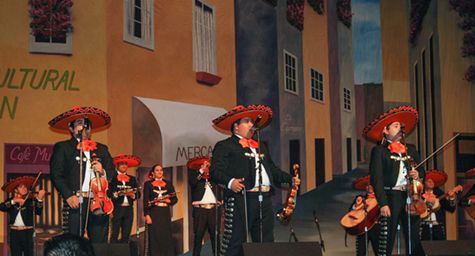Early Career Scientist Spotlight
Dr. Laura Vega (she/her/hers)
Astrophysicist
Exoplanets and Stellar Astrophysics Laboratory (667)
What inspired you to pursue a career in astrophysics?
My main source of inspiration came from family road trip vacations to Mexico. My younger siblings and I were born and raised in San Antonio, TX, and every summer my parents would take us to their hometowns in Coahuila and Zacatecas, two states in the northern and central regions of Mexico. This gave us the chance to get to know family and learn about our culture. Dad loved driving at night, so we always left around midnight for our 15-hour journey. Staring out the car window or when pulling over to stretch our legs, I always found myself gazing in awe at the clear and starry night sky above the desert mountains. It left a great impression on me as a child and sparked my curiosity about all things space.
I also developed an interest in science in general at a very young age because I would watch Bill Nye the Science Guy every day after school when I was in elementary. I was also inspired by two outstanding teachers at Tafolla Middle School, Ms. Wiltse in 6th grade and Ms. Zepeda in 7th grade, with their enthusiasm and love for science. And in high school, I started watching The X-Files and was starstruck by the fictional character Dana Scully – so I can attest to the Scully Effect!
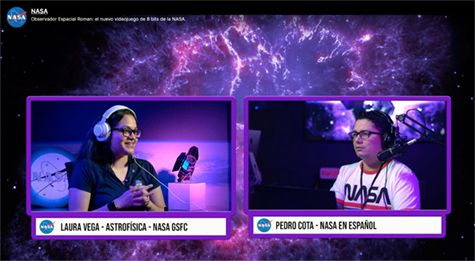
Credit: NASA on Twitch, June 2022
What is your research focus?
My dissertation research focused on understanding a class of luminous pulsating supergiant stars called RV Tauri variables. These stars evolve from low-to-intermediate mass (0.6-10 solar masses) progenitors and with a smaller stellar companion. A large dusty disk also surrounds these binary systems. Using observations from NASA’s Kepler space telescope, I studied DF Cygni, the only RV Tauri variable in Kepler’s original field-of-view, to see how binarity and the presence of the dusty disk affect the light we see from this system. I also focused on U Monocerotis (U Mon), the second brightest RV Tauri variable in the sky. I analyzed observations that had the longest temporal baseline (beginning in the 1890s) and spanned the largest electromagnetic spectrum coverage (X-ray to millimeter) ever compiled for an RV Tauri system.
Currently, I am a member of the Stellar Flares Group at NASA Goddard and our objective is to measure the rates and energies of flares over time of active red dwarf stars, spanning the entire M dwarf mass regime (0.08-0.6 solar masses) using multiwavelength data spanning X-ray to radio. My particular focus is the examination of ultraviolet flares. Our goal is to understand how stellar flares affect the atmospheres of planets and their space weather environments to determine whether they are suited for the search for life. We are using data from NASA’s Swift, NICER, and TESS space telescopes, as well as ground telescopes, to obtain simultaneous observations. These observations allow us to measure and compare durations, amplitudes, and the energy of flares across the electromagnetic spectrum. With this new parameter space, we are gaining insights into the physics that is driving activity in these stars.
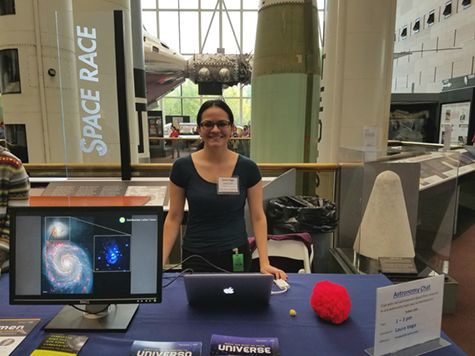
Credit: Rudy Montez Jr., October 2017
What research accomplishment are you most proud of?
One of the projects that I’m most proud of is a report on a ~130-year dataset that covered the widest range of light (from radio to X-rays) yet collected for an RV Tauri system, U Mon. We used observations from the Submillimeter Array, the Digital Access to a Sky Century @ Harvard (DASCH), the American Association of Variable Star Observers (AAVSO), and the XMM-Newton satellite. U Mon is the first RV Tauri variable from which X-ray have been detected. Our results are published in the Astrophysical Journal and were released as a NASA Feature!
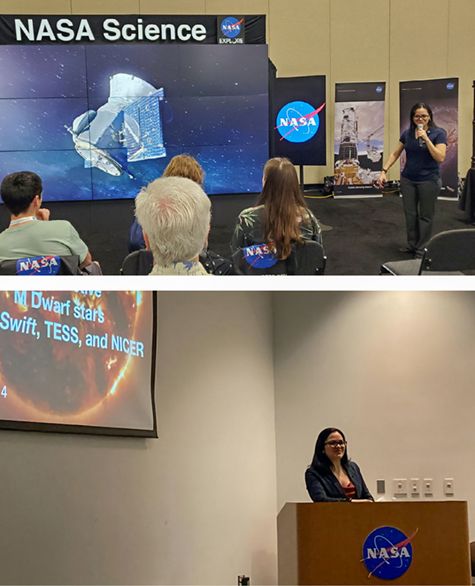
Bottom: Giving a contributed talk at the Ultraviolet Science at Goddard Symposium.
Credit: Top: Rudy Montez Jr., January 2020; Bottom: Laura Vega, April 2022
What is one of your favorite moments in your career so far?
Getting hooded by my PhD advisor, Dr. Keivan Stassun, in front of my family! Due to precautions of the COVID-19 pandemic, doctoral graduates had to hood themselves at the 2021 Vanderbilt University commencement ceremony. Only four guests per graduate were permitted entry into the stadium, yet many of my family members still drove to Nashville from San Antonio, TX, and Indianapolis, IN to be with me on this special day. Later that evening, Keivan joined my family and me for dinner at a Mexican restaurant to give me a doctoral hood, as a gift for me to keep. He gave a speech in Spanish about the significance of the hood and then put it on me. It was quite a unique experience!
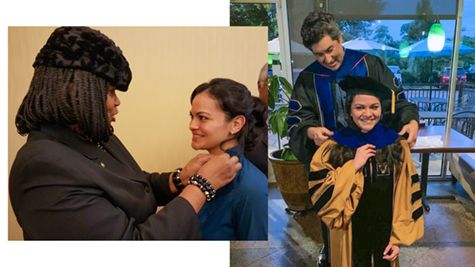
Right: My PhD advisor, Dr. Keivan Stassun, hooding me to make it official – I am Dr. Laura Vega!
Credit: Left: Laura Vega, October 2015; Right: Jesse Rodriguez, May 2021
How did you end up working at NASA Goddard?
Being at NASA is a dream come true! In 2015, during my second year of graduate school, my advisor and my research mentor, Dr. Rudy Montez Jr., encouraged me to apply to NASA’s Minority University Research and Education Project – Harriett G. Jenkins Predoctoral Fellowship, a program administered by NASA’s Office of STEM Engagement. To my surprise, my proposal was 1 of only 10 selected in the U.S. that year! This opportunity included an annual 10-week, hands-on research experience at Goddard, where I first began to collaborate with my NASA mentor, Dr. Padi Boyd. When I received my PhD in 2021, I had the support of the Heising-Simons Foundation Astrophysics Postdoctoral Launch Program Fellowship, a new opportunity for graduates of the Fisk-Vanderbilt Master’s-to-PhD Bridge Program and bridge programs at Columbia and Ohio State, to pursue postdoctoral research at a host institution. This opportunity has enabled me to continue to conduct research at Goddard and The University of Maryland-College Park. I am very grateful that Bridge and NASA have supported me throughout my graduate studies and now my postdoctoral journey.
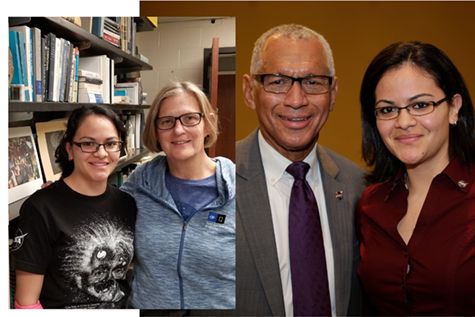
Left: Former NASA astronaut, Dr. Kathryn Sullivan. She is the first American woman to walk in space!
Right: Former Administrator of NASA and former astronaut, Charles Bolden Jr. who I met at the Institute for Teaching and Mentoring, the largest gathering of underrepresented minority Ph.D. scholars in the country.
Credit: Left: Bob O’Dell, March 2018; Right: CW Studios, LLC, November 2015
What early career advice do you have for those looking to do what you do?
Network with everybody. Every person has something to offer or knows something that you don’t, so do not be shy to explore and speak with individuals in various industries and disciplines. By doing so, you may discover a whole new world of resources, opportunities, and ideas!
Adopt a growth mindset. Our successes are never free of adversity; accept that setbacks will happen. A growth mentality is knowing that failures are temporary, it is also having the persistence to move on, to not give up, and to see opportunities in failures.
Credit: MariachiMusic.com, December 2008
What is a fun fact about you?
I’m a huge Nine Inch Nails fan.
My mom and dad both have astronomical last names, Vega and Luna.
Ok, last one: I used to be a mariachi trumpet player. I started playing trumpet in seventh grade and continued playing throughout college. It is interesting that boys are more likely to pick up the trumpet than girls since it is perceived to be more "masculine.” Mariachi has traditionally been a male-dominated genre, similar to how physics has historically been a profession dominated by men. But given that I am here, you could say that I enjoy making my way into spaces and professions that are predominately male, not only doing the thing but advocating and representing women while doing it!
Biography
Home Town:
San Antonio, TX
Undergraduate Degree:
B.Sc. in Physics, The University of Texas at San Antonio, San Antonio, TX
Post-graduate Degrees:
M.A. in Physics, Fisk University, Nashville, TN
Ph.D. in Astrophysics, Vanderbilt University, Nashville, TN
